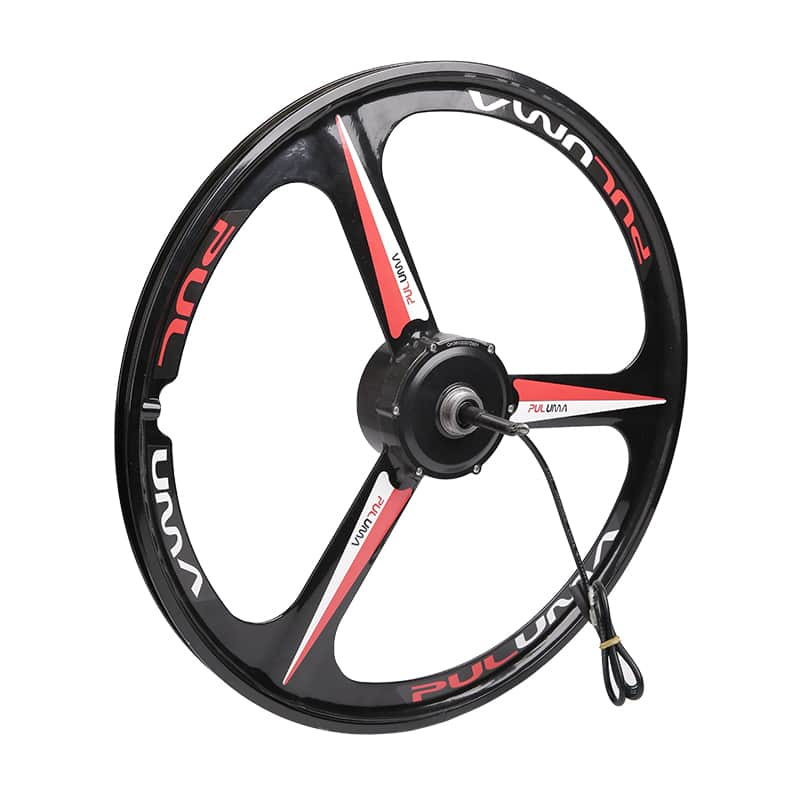Summary:1.Individual Wheel Control: Motor wheels offer precise control over each wheel's rotational speed and torque output. This level of control allows for ...
1.Individual Wheel Control: Motor wheels offer precise control over each wheel's rotational speed and torque output. This level of control allows for independent management of power delivery to each wheel, enabling optimized traction and handling dynamics in diverse driving scenarios. By independently adjusting torque to each wheel, motor wheel systems can effectively manage vehicle stability, especially during cornering and acceleration.
2.Torque Vectoring: Torque vectoring is a dynamic control strategy that optimizes vehicle stability and agility by modulating the torque applied to individual wheels. Motor wheels implement torque vectoring algorithms that calculate the ideal torque distribution based on factors such as vehicle speed, steering angle, road conditions, and lateral acceleration. By dynamically adjusting torque delivery to each wheel, motor wheels can enhance cornering performance, reduce understeer and oversteer tendencies, and improve overall handling characteristics.
3.Traction Control: Traction control is a fundamental feature of motor wheel systems that mitigates wheel slip and loss of traction. Through sophisticated traction control algorithms, motor wheels monitor wheel speeds and detect instances of wheel slip or spin. When wheel slip is detected, the system intervenes by selectively reducing torque to the affected wheels or redistributing torque to wheels with better grip. This proactive intervention helps maintain traction on slippery surfaces, such as ice or wet pavement, and enhances vehicle stability and control, particularly during acceleration and cornering maneuvers.
4.Dynamic Stability Control: Motor wheels play a key role in dynamic stability control systems, which help keep vehicles stable and balanced during dynamic driving conditions. By continuously monitoring vehicle dynamics, including yaw rate, lateral acceleration, and wheel speeds, motor wheel systems can anticipate and mitigate instances of oversteer or understeer. Through precise torque vectoring and traction control strategies, motor wheels help correct deviations from the intended vehicle trajectory, enhancing driving confidence and safety.
5.Integrated Sensors and Algorithms: Motor wheel systems incorporate a sophisticated network of sensors and control algorithms to gather and process real-time data on vehicle dynamics and road conditions. Wheel speed sensors, steering angle sensors, gyroscopes, and accelerometers provide inputs to advanced control algorithms that analyze the data and determine the optimal torque distribution for each wheel. This integration of sensors and algorithms enables motor wheel systems to adapt quickly to changing driving conditions and driver inputs, enhancing vehicle performance and stability.
6.Adaptive Control Strategies: Motor wheel systems employ adaptive control strategies that continuously adjust torque distribution based on evolving driving scenarios and environmental conditions. Adaptive control algorithms monitor inputs such as throttle position, brake pressure, and wheel slip, and dynamically adjust torque delivery to optimize traction and stability. By adapting in real time to variations in road surface conditions, vehicle load, and driver behavior, motor wheel systems provide consistent and predictable driving dynamics across a wide range of operating conditions.
7.Regenerative Braking: Regenerative braking is an integral feature of motor wheel systems that enhances energy efficiency and control during deceleration. When the driver applies the brakes, motor wheels transition from propulsion mode to regenerative braking mode, converting kinetic energy into electrical energy. By selectively applying resistance to the wheels and capturing energy during deceleration, regenerative braking helps recharge the vehicle's battery and reduce reliance on traditional friction brakes. This regenerative braking capability also provides additional control over wheel torque and traction, contributing to overall vehicle stability and efficiency.
750W26 inch QH-YM750W(26) Mountain bike integrated wheel motor


